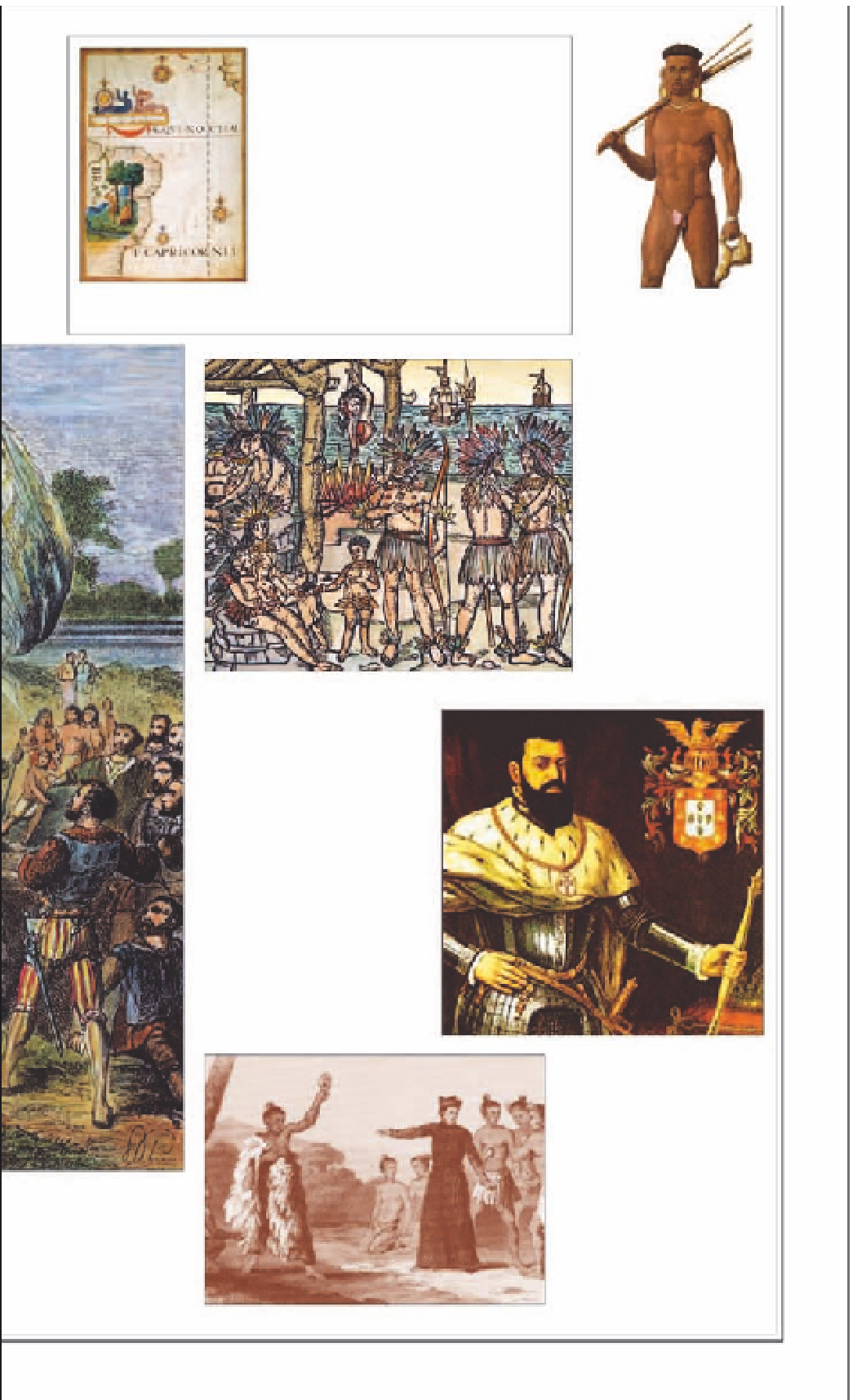Travel Reference
In-Depth Information
THE NAMING OF BRAZIL
Officially, the land was named for
pau-
brasil
, or brazil wood, a tree yielding a
valuable red dye. However, the name
“Brazil” appreared in the Irish legend of
St. Brendan as Hy Brazik (Blessed Land
in Gaelic). It became part of European
maritime folklore, designating a hypo-
thetical land located somewhere in the
Atlantic. When Cabral found a new land
in that general area, he may have
identified it with Brendan's Brazil. The
tree might have been named after the
land, rather than the other way around.
Early Brazil map, showing
a couple under brazil wood
Botocudos Man
Still surviving in some
parts of Brazil, the
Botocudos were
hunter-gatherers.
Woodcut Showing
Tupinambá People
Ritually practicing
cannibalism, the
Tupinambá were some
of the first Brazilians to
make contact with the
Portuguese. They soon
died from diseases car-
ried by the Europeans,
and from the condi-
tions of their capture
and enslavement.
João III (1502-57)
King João III ascended to the
throne while the Portuguese
Empire was at the height of its
mercantile and colonial
power. Unable to directly
govern Brazil, King João III
divided the land into 15
capitanias
, or captaincies.
Settlement was focused
mainly on the long coastline.
Only São Vicente and
Pernambuco immediately
prospered. In 1548, the king
repossessed the captaincies
and brought Brazil under
his direct control.
A Jesuit Admonishing
Indigenous People
The influence of the Jesuits
accompanied this early
period of colonization.
The first missionaries had
arrived in 1549 and
acquired great power in
Brazil through their
influence on the Portuguese
court. A zealous missionary
movement began, aimed at
converting the local people.
Skilled captains
accompanied Cabral
in his explorations
to discover new
territories.

































